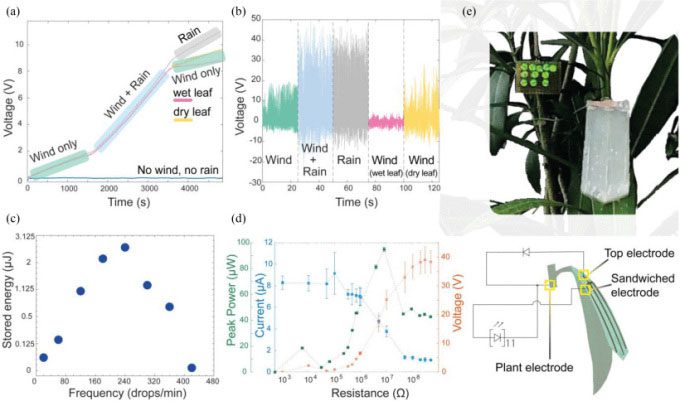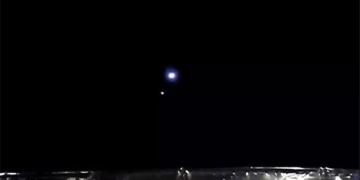Thanks to a new artificial leaf, the Italian Institute of Technology generates electricity from wind and rain, powering 11 LED lights.
Fabian Meder, a soft robotics researcher inspired by biology at the Italian Institute of Technology (IIT), along with his colleagues, has developed an artificial leaf that can be integrated into real plants to generate electricity from rain and wind, Interesting Engineering reported on March 19. The new research has been published in the journal IEEE Robotics and Automation Letters.

The artificial leaf attached to a real leaf by the IIT research team helps generate electricity from wind and rain. (Photo: IEEE Robotics and Automation Letters).
To operate, the device needs to be attached to the leaves of real plants. “As the leaves move in the wind, two surfaces come into contact and then separate, creating static electricity on the cutin layer of the plant leaf and on our device. The charge is transferred into the plant’s cellular tissue, generating current there. We can harvest this current thanks to an electrode inserted into the plant tissue,” Meder explained.
The research team also tested the artificial leaf system on the leaves of real oleander plants and assessed its ability to generate energy from rain. The results showed that individual water droplets could produce a voltage and current of over 40 volts and 15 microamps, enough to power 11 LED lights.
“The results indicate that the device can harvest energy from wind and rain separately or simultaneously. This makes the device a versatile energy harvesting machine or a self-powered sensor,” Barbara Mazzolai, director of the Soft Robotics Laboratory at IIT and a member of the research team, stated.
The main advantage of this energy harvesting system compared to similar models is its ability to generate more electricity in humid conditions, according to Mazzolai. Meanwhile, other artificial leaf devices often encounter obstacles when wet.
Meder noted that the new device could be useful in agriculture, helping to remotely monitor environmental conditions to observe plant health or track climate conditions. The team of experts is looking to enhance the efficiency of the artificial leaves by adjusting the design, such as the shape of the electrodes and the materials used.




















































